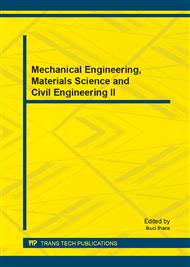p.559
p.563
p.567
p.572
p.577
p.581
p.585
p.589
p.593
Experimental Study on the Surface Roughness of 40Cr by Ultrasonic Finishing Machining
Abstract:
The research object is 40Cr shaft parts after quenched and tempered. Optimize the main process parameters working pressure, frequency and amplitude of ultrasonic finishing. It is obtained that the various parameters influence the surface roughness of the machining samples and the optimum technological parameters combination which is consistent with experimental results. Using the SPSS software to analyze the results, obtained the process parameters impact trend of the postprocessing roughness. Contrast groups of test data, the best result was reduced by 98.4% compared with the initial roughness , reached the Ra0.04μm.
Info:
Periodical:
Pages:
577-580
Citation:
Online since:
December 2013
Authors:
Keywords:
Price:
Сopyright:
© 2014 Trans Tech Publications Ltd. All Rights Reserved
Share:
Citation:


